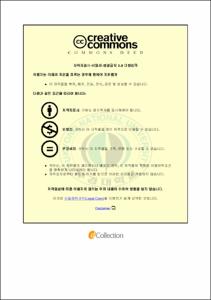개정 교육과정에 따른 초등학교 3학년 영어교과서 게임분석
- Abstract
- Abstract
The purpose of this study is to analyze games in the new third grade elementary school English textbooks, and to compare them with the previously published textbook that was based on the 7the National Curriculum Revision. This study will look at similarities and differences between the two types of books, and try to provide conducive suggestions for English teachers who use games in their classes.
For that purpose, the games in the new textbooks were analyzed in terms of factors such as the game type, organization, communicative functions, speaking practice type, language skills, physical responses, purposes, motivation, choosing the game leader, competitive counterparts, operating activities, and the victory.
The results of the analysis are as follows: First, there are several similarities between the two types of textbooks. The first one is a trend to handle only a few game types. Even though the two types of textbooks have different high-ranking games, they tend to focus only on some games. In the older textbook, the question and answer type games ranked highest, the card & board games ranked next highest, the information exchange games, and the guessing games. However, in the new textbooks, the card & board games ranked highest, the memory games and guessing games in that order. It was found that there is a limited number of game types presented in the Korean elementary English textbooks.
With regard to language skills, there is virtually no considerable change compared with the games in the older textbook. The tendency towards speaking and listening skills remains relatively the same. Also, when it comes to the possibility of who will win the game, there exists very little change, either. Among the games in the older textbook, children's English ability is the major element to win a game. Although the ability element has a big side effect when it works alone, it is the same as before.
However, there are some positive similarities. With regard to who plays the role of the game leader, the analysis showed that game leaders tended to be the students themselves. It is a good point when we think about educational effects. Students can enjoy games a lot, and they can learn English naturally. In terms of hads-on activities, it is the same. Every game, both in the older textbook and new textbooks requires kinesthetic movements to play. Students need to do something not only verbally but also physically when they play games. Due to the age factor, children can feel bored easily, which is why games involving physical movements help them as well.
Now several differences were found to exist between games in the older textbook and those in the new textbooks.
First, in terms of organization, the most prevalent activity type was whole-class work. However, in the new textbooks, group work and pair work occupy over a half of the games. It means more students have opportunities to use English and participate in games actively.
Second, with regard to motivation, the competitive spirit was encouraged more than cooperation. In the older textbook, competitive games were more common than in the current textbooks, but the teamwork spirit seemed to extend slightly. Because of this change, students may be able to learn English pleasantly.
Third, when it comes to the physical response, the need to respond verbally was reduced conspicuously. It means that students will be able to be exposed to more language input while playing games instead of burden to speak in English.
Finally, an interesting change has taken place in language skills. In the older textbook, there is no game related to reading and writing skills. It might have been natural because the 7th National Curriculum Revision did not handle the two language skills in the 3rd grade textbook. However, the New National Curriculum Revision utilizes them from the 3rd grade on. Therefore, some games are meant to use reading and writing skills. Despite the narrow ratio of those skills, it signifies a meaningful beginning towards developing literacy in English.
Accordingly, it may be said that the attempt to utilize various games will be an important project for English teachers to provide children with more effective games to play in English. On top of it, English teachers in elementary schools need to study more games in order to maintain positive effects of playing games in English while inventing various ways to minimize negative effects.
- Issued Date
- 2012
- Awarded Date
- 2012. 2
- Type
- Dissertation
- Publisher
- 부경대학교 교육대학원
- Alternative Author(s)
- Seong Hee Kim
- Department
- 교육대학원 초등영어교육전공
- Advisor
- 박매란
- Table Of Contents
- Ⅰ. 서론 1
1. 연구의 필요성과 목적 1
2. 연구 과제 3
3. 본 연구의 제한점 4
Ⅱ. 이론적 배경 5
1. 제7차 교육과정과 개정 교육과정 5
2. 게임을 통한 영어교육 18
3. 초등영어 교육에서 게임의 활용 23
4. 선행 연구 34
Ⅲ. 연구 방법 38
1. 연구 기간 및 연구 대상 38
2. 연구 도구 및 방법 39
3. 연구 내용 45
Ⅳ. 결과 분석 및 논의 52
1. 게임의 유형 및 게임 조직 형태에 따른 분석 52
2. 게임의 의사소통 기능 및 연습 유형에 따른 분석 56
3. 게임의 언어 기능 및 신체 반응에 따른 분석 60
4. 게임의 목적 및 성취동기에 따른 분석 63
5. 게임의 주도자 및 경쟁대상에 따른 분석 66
6. 게임의 조작활동 유무 및 승부 요소에 따른 분석 68
Ⅴ. 결론 및 제언 70
1. 결론 70
2. 제언 74
참고 문헌 75
부록 79
- Degree
- Master
- Files in This Item:
-
-
Download
 개정 교육과정에 따른 초등학교 3학년 영어교과서 게임분석.pdf
기타 데이터 / 1.21 MB / Adobe PDF
개정 교육과정에 따른 초등학교 3학년 영어교과서 게임분석.pdf
기타 데이터 / 1.21 MB / Adobe PDF
-
Items in Repository are protected by copyright, with all rights reserved, unless otherwise indicated.